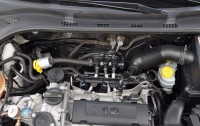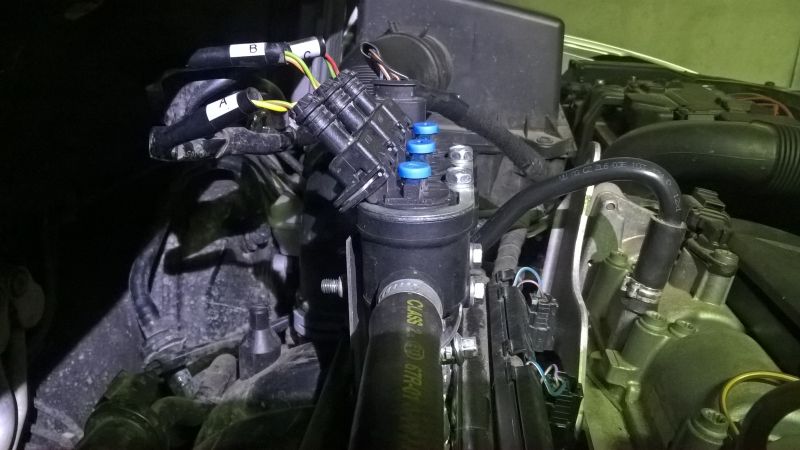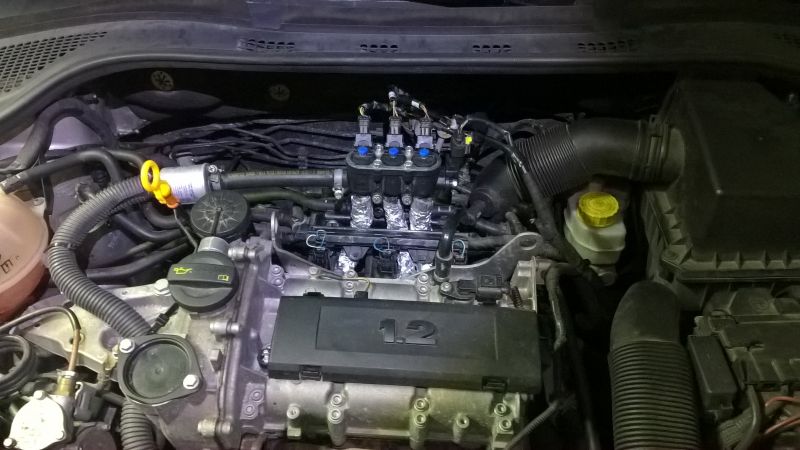Are the injectors replaceable? Any insights from other Rapid users or this type of LPG installation?
Skoda RApid- inst. Lpg Landi Renzo assembled before purchase in the showroom - installation of the so-called dedicated.
I am the 2nd owner.
For a guarantee of 8 thousand km, the injection rail and the tank's multivalve were replaced!
The current mileage of 35 thousand. km (100% original) and again the problem. The car switches to gas without any problems when the engine reaches above 55 degrees C oil temperature. The fluid in circulation is 90 degrees C much earlier than the oil reaches 50 degrees C. The factory installation switches to LPG at 40st. C fluid.
When left for automatic switching according to the controller, the car jerks for a moment, switches to petrol and the switch flashes with diodes as if the gas has run out. In addition, CHECK and ESP and sometimes ABS will light up immediately. Trying to force driving on LPG will worsen symptoms and cause the car to stop. After a successful switchover on a hot engine, there are NO problems with driving, neither with engine power, nor with gas consumption. Sometimes on a hot engine, for example after a momentary stopping and turning off the ignition, the symptoms are as described above on a cold / underheated engine to "full" temperature.
In the ASO salon they claim that Rapidy has a faulty assembly - the location under the hood of the injection rail and a different handle for the rail has been developed and the injectors need to be replaced with a new rail holder and adjust the installation. PLN 1200 + labor. They dragged me there for 2 x and I don't trust me. Hence the question, is it necessary, normal, others have it too?
During the first visit to the Dealership after the purchase, the discussion was not so much about damaged injectors, but about hoses / rubber hoses bending from high temperature supplying gas to the manifold from LPG injectors. and it is their bending that causes damage to the injectors with time.
Old cables had such a gray rim on top, stiffening them. During the first "on my own" approach to solving the problem with LPG, I replaced these hoses with non-bending, thick and stiff others and added thermal insulation to protect the cables / hoses from overheating. It didn't help at all. But it probably didn't hurt, fortunately. I am now thinking about washing these injectors or replacing them with new ones, but on my own. In the service, they will regulate the installation the most. I just wonder how much time the next injections will work. It's kind of paranoid. Before that, I had different cars and had NO problems despite the high mileage. In one AVEO I regenerated the evaporator, but that's normal. What's with this Skoda?
Is raising the injection molding. up closer to the mask will actually affect the temperature of the air flowing around it? Since the place of installation of the dedicated installation was wrongly chosen - the place was probably agreed with the LPG producer, then the DZIADY should replace / correct it for life free of charge.
I am asking for some advice / hint as to the cause of the fault / course of action.
Skoda RApid- inst. Lpg Landi Renzo assembled before purchase in the showroom - installation of the so-called dedicated.
I am the 2nd owner.
For a guarantee of 8 thousand km, the injection rail and the tank's multivalve were replaced!
The current mileage of 35 thousand. km (100% original) and again the problem. The car switches to gas without any problems when the engine reaches above 55 degrees C oil temperature. The fluid in circulation is 90 degrees C much earlier than the oil reaches 50 degrees C. The factory installation switches to LPG at 40st. C fluid.
When left for automatic switching according to the controller, the car jerks for a moment, switches to petrol and the switch flashes with diodes as if the gas has run out. In addition, CHECK and ESP and sometimes ABS will light up immediately. Trying to force driving on LPG will worsen symptoms and cause the car to stop. After a successful switchover on a hot engine, there are NO problems with driving, neither with engine power, nor with gas consumption. Sometimes on a hot engine, for example after a momentary stopping and turning off the ignition, the symptoms are as described above on a cold / underheated engine to "full" temperature.
In the ASO salon they claim that Rapidy has a faulty assembly - the location under the hood of the injection rail and a different handle for the rail has been developed and the injectors need to be replaced with a new rail holder and adjust the installation. PLN 1200 + labor. They dragged me there for 2 x and I don't trust me. Hence the question, is it necessary, normal, others have it too?
During the first visit to the Dealership after the purchase, the discussion was not so much about damaged injectors, but about hoses / rubber hoses bending from high temperature supplying gas to the manifold from LPG injectors. and it is their bending that causes damage to the injectors with time.
Old cables had such a gray rim on top, stiffening them. During the first "on my own" approach to solving the problem with LPG, I replaced these hoses with non-bending, thick and stiff others and added thermal insulation to protect the cables / hoses from overheating. It didn't help at all. But it probably didn't hurt, fortunately. I am now thinking about washing these injectors or replacing them with new ones, but on my own. In the service, they will regulate the installation the most. I just wonder how much time the next injections will work. It's kind of paranoid. Before that, I had different cars and had NO problems despite the high mileage. In one AVEO I regenerated the evaporator, but that's normal. What's with this Skoda?
Is raising the injection molding. up closer to the mask will actually affect the temperature of the air flowing around it? Since the place of installation of the dedicated installation was wrongly chosen - the place was probably agreed with the LPG producer, then the DZIADY should replace / correct it for life free of charge.
I am asking for some advice / hint as to the cause of the fault / course of action.





